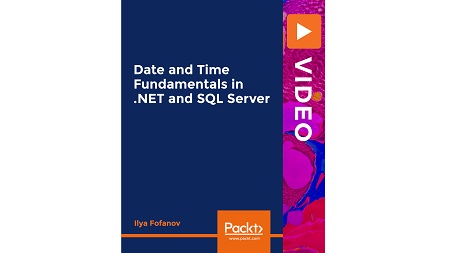
English | MP4 | AVC 1920×1080 | AAC 48KHz 2ch | 3h 20m | 2.23 GB
Learn how to work with date and time values properly, including DateTime and NodaTime (Noda Time)
This course will help you build a solid foundation in working with dates and times in software development.
Almost all software works with dates and times in one form or another. However, dates and times give rise to many pitfalls even in very simple scenarios. We all know that security and logging are regular aspects of almost any program. Most developers have no idea how many bugs are concealed behind dates and times; they lie dormant in programs and can suddenly blow up your production code, causing very unfortunate repercussions. That’s why working with dates and times is a fully fledged and very important aspect of software development.
This course covers the following topics:
- Date and Time fundamentals: Gregorian calendar, UTC, GMT, Atomic time, how computers store time, NTP, date and time formats based on standards and specifications, Epoch Time and Unit Time, and date and time scope and perspectives
- Time Zones: Definition (complex one), Daylight-Saving Time (DST), providers such as IANA or TZDB and Microsoft
- Date and Time in .NET: DateTime, DateTimeOffset, TimeZoneInfo, TimeSpan, Calendars, Stopwatch and many intrinsic details.
- Noda Time: overview, core types, unit testing
- A great number of best practices for working with dates and times: arithmetic on dates, parsing, calculating birthdays, scheduling events, date formats, ranges, and more.
In the end, we will recap what you have learned.
Learn
- Dates and times in the .NET Framework
- Use Noda Time to write reliable code
- Dates and times in SQL Server
- Time zones
Table of Contents
Theoretical Background
1 Outline
2 Why You Need to Learn About Date and Time
3 Problems with Dates and Times
4 How a PC Stores and Measures Time
5 Atomic Time
6 UTC and GMT
7 Introduction to Timezone
8 Date and Time Format
9 Unix and Epoch Time
10 Scope
11 Perspective
12 Conclusion
Time Zones
13 Outline
14 Daylight Saving Time (DST)
15 What is a Time Zone
16 IANA Time Zone Database (TZDB)
17 Microsoft Time Zone Database
18 Conclusion
Date and Time in the .NET Framework
19 Outline
20 DateTime Structure
21 DateTime Roundtrip Example
22 DateTimeOffset
23 TimeZoneInfo – Working with Time Zones
24 TimeSpan
25 Calendars
26 Stopwatch
27 Conclusion on BCL Types
Noda Time
28 Overview
29 Core Types
30 Unit Testing with Noda Time
31 Conclusion
Date & Time in SQL Server
32 Outline
33 DATE
34 TIME
35 DATETIME
36 Functions
37 DATETIMEOFFSET and Time Zones
38 Conclusion
Best Practices of Working with Dates and Times
39 Outline
40 Arithmetic on Dates
41 The Problem of Parsing
42 Calculating a Birthday
43 Scheduling Events
44 Date Formats
45 Working with Ranges
46 Other Best Practices
47 Conclusion
Resolve the captcha to access the links!